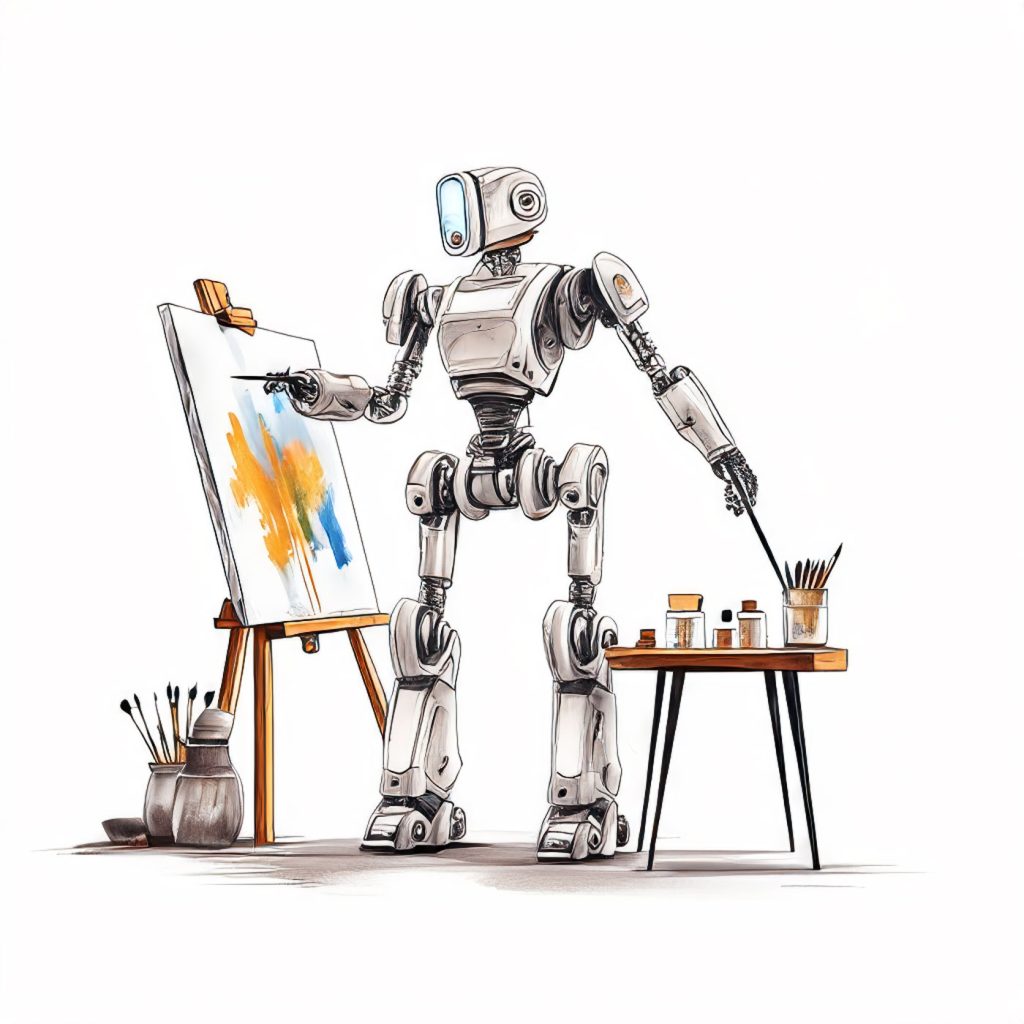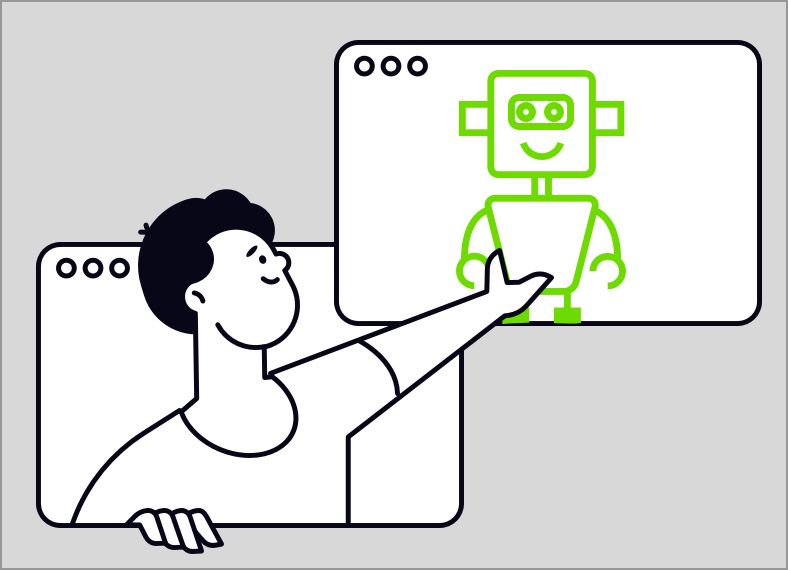Great art is special. Despite the gratuitous overuse of superlatives on the internet, very few works can truly be described as awesome. A masterpiece is a rare thing, as it should be.
In order to produce a work that merits such a lofty accolade, the artist must possess a world‑class level of skill and talent. Nobody can compose a symphony for the ages or brush a Louvre‑worthy painting without first dedicating thousands of hours to mastering their craft. In short, it is hard work.
But what if it wasn’t?
The age of generative AI
When I first heard about Midjourney, I was intrigued. A platform in which you could type anything that pops into your imagination, and it will conjure up an image? It sounded too good to be true.
And in a way it was. After the initial novelty wore off, the glitch‑riddled results became tiresome. With the site’s communal nature, it quickly became apparent that the vast majority of requested images were inane dross. Keanu Reeves eating a bowl of baked beans? Hold my sides!
Things have moved on since then. Midjourney is much improved. In addition to drawing pictures, there are generative AI applications that can answer questions, offer advice, assess your writing, tell stories, generate code, create a logo, compose music, and produce full‑motion video. The creative results are usually blatantly unconvincing and have a telltale artificiality, at least without some post‑processing. Nonetheless, we’re talking about a technology in its early stages and one that is developing rapidly.

Technology’s role in art
Generative AI is far from the first catalyst for a technology‑versus‑talent debate. The camera was considered a threat to painters. Why go to all the messy palaver of a canvas and paints when you can simply press a button and capture a scene in an instant? Electronic music was – and sometimes still is – criticised as a rigid and soulless form of aural creativity.
But for every detractor, there is an advocate. There’s a convincing case to be made for the use of the tool being what matters, rather than the existence of the tool itself. Few would deny that Ansel Adams is a masterful photographer, or that Vangelis is a talented musician who had the vision to explore modern technology.
There’s another important point: despite initial fears, these new technologies did not replace their more traditional cousins. It seems silly now to imagine that synthesisers might have made acoustic instruments obsolete. There’s plenty of room in the creative world for painting and photography, both analogue and digital.
Art versus design
Art is subjective, and not only in terms of personal tastes. The very nature of art is a matter for eternal debate. Arguably the most important single value of art is expression. Expression of thoughts, and ideas, and emotions. These are innately human qualities that a computer cannot replicate. Not yet at least.
Design, on the other hand, represents a more functional dimension of creativity. There’s usually a defined objective, in contrast to the nebulous experience of art. While there is often an overlap between the disciplines, design is more clinical, and art is more interpretive.
Tearing down barriers
The challenge with any creative endeavour is taking the vision in your head and making it a reality. Skill therefore is a barrier. By virtue of being difficult to produce, a work of creativity is worthy of our attention.
But not everyone has the time, natural aptitude or even physical ability to become a great painter or musician or moviemaker. I doubt many people would consciously want to block someone’s desire to create. Therefore a more accessible point of entry is surely a good thing. Generative AI offers a means of creation from pure imagination, without a long and arduous path of learning.
Imperfectly perfect
Many years ago, I had an impromptu conversation with a stranger in a bar about AI‑generated movies. It was largely what if. At that point in time, I didn’t really expect to see such a thing become a reality in my lifetime.
One of the talking points was the concept of tailoring an existing film to personal preferences. I’m sure we’ve all watched films that were so close to greatness, were it not for a few niggling flaws. Well, what if a computer could refine it? Out with the immersion‑breakingly overblown finale, in with the ending of your dreams. It’s perfect now, right?
But is computer‑generated perfection really a desirable goal in art? Flaws are part of the human condition. Art is a thing to be discussed, warts and all. If everything is ‘perfect’, nothing is special.
A creative tipping point
We’ve established that technology in itself doesn’t negate artistry. A paintbrush or a violin is a piece of technology. Even the scratching of a mammoth into a cave wall requires a tool. So, unless we consider anything beyond melodic human wailing to be cheating, technology is a part of art.
Generative AI can often serve as a creative aid. Output can be influenced, refined and repurposed. That demands human creativity. And if there’s a human at the helm, then the finished work will still carry some kind of meaning. Something is being expressed.
But what happens when the tool becomes so sophisticated that the need for human input is thoroughly diluted? Right now we can tell a computer what we want it to generate. Maybe next we will only need to think it. Perhaps the technology will advance to the point that we can skip even that mental exertion, and instead wait to be served creations that the computer already knows to be to our liking. At some point, the balance swings towards computer-generated rather than computer-aided. Perhaps we are already past that point.
The WALL‑E warning
From Metropolis to The Terminator to Black Mirror, our storytelling has often incorporated themes about the dangers of technology. But the one that stands out to me as the most prescient is Pixar’s WALL‑E. For those that haven’t seen it, it depicts a future in which humans live a coddled but empty life. Machines cater for mankind’s every need, creating an existence of pure consumption while human connection and knowledge are lost.
Back to the real world. Current AI technology is primitive compared to the examples we’ve seen in fiction. Artificial general intelligence (AGI) has yet to be achieved, and perhaps never will. Nonetheless, it’s not unfeasible to imagine AI advancing to the point where our technological dependence becomes a serious concern. Creativity is just one aspect of our lives that is already influenced by AI. And while it’s correct to say that it is human ingenuity that brought us to this point in the first place, that is too indirect a factor when considering the potential long term effects.
The best of both worlds
AI isn’t going away. Humans by nature push forward and strive for more. Onwards and upwards!
But it’s always nice to ‘get away from it’. Modern life takes place in the digital world to an unhealthy degree. Maybe it’s time to turn off the computer, dust off the old drawing pencils set, and create something a little more pure.


